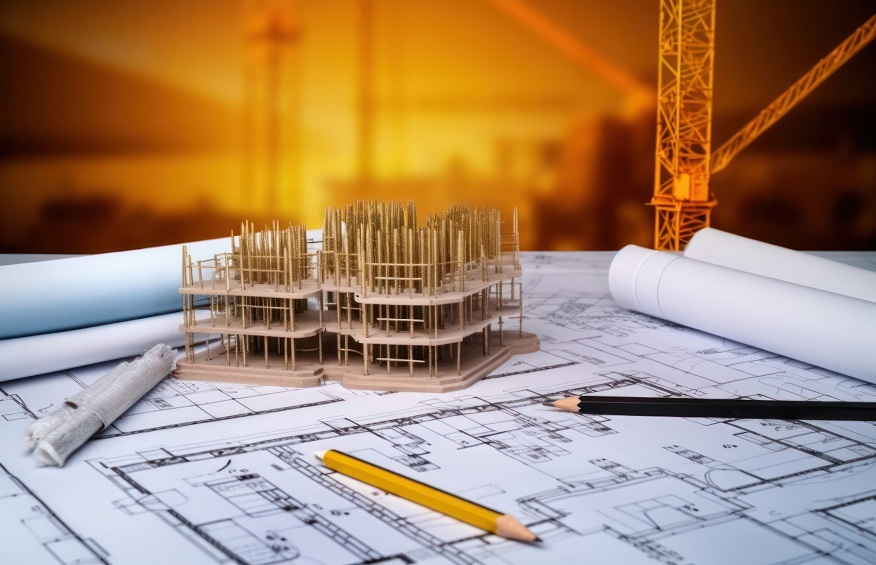3D site modeling by experienced land surveyors revolutionizes home construction by offering a comprehensive understanding of land dynamics. The expertise helps visualize topography, obstacles, and environmental factors, optimizing home placement and accommodating drainage, sunlight, and landscape integration. It ensures harmonious construction alignment with natural features, enhancing efficiency and minimizing risks for well-planned, structurally sound homes. The article explores the impact of 3D modeling in enhancing modern home construction.
1. Construction Site Analysis
Experienced land surveyors employ 3d site modeling boise extensively in construction site analysis, enabling a comprehensive understanding of topography, existing structures, and environmental factors. This technology empowers architects and builders to make informed decisions, optimize design, and enhance safety. Land surveyors utilize 3D modeling to visualize site topography, identify terrain challenges, and plan infrastructure before construction begins.
The technology identifies optimal building placements, evaluates site feasibility, and aids infrastructure planning. Its importance lies in mitigating risks, improving safety, and optimizing design elements to ensure efficient resource allocation. Its significance lies in risk mitigation, improved safety, and efficient resource allocation. Accurate site analysis through 3D modeling ensures better long-term planning and cost-effectiveness while minimizing delays, ultimately streamlining processes and enhancing project outcomes.
2. Precision in Home Design for Construction Planning
3D site modeling revolutionizes construction planning by enhancing design precision. Land surveyors leverage this technology to visualize homes in their intended environment, incorporating natural light, scenic views, and landscape interactions. 3D models by experienced surveyors ensure meticulous terrain assessment, fostering accurate design plans that harmonize with the landscape and its surroundings.
The precision in incorporating home design with its placement minimizes errors, optimizing construction plans for efficiency. Also, detailed excavation planning safeguards against unnecessary work, maximizing efficiency and adherence to project timelines. 3D modeling guarantees safety, resource efficiency, and exact specifications through precise mapping and visualization, contributing significantly to project success.
3. Optimal Resource Management
Experienced land surveyors develop comprehensive 3D site models that help optimize resource management by empowering surveyors to allocate resources efficiently. The technology offers intricate terrain data, aiding in judicious land use, precise placement of crucial elements, and identification of unstable areas.
Also, minimizing unnecessary excavation and considering drainage and grading ensures effective water management and avoids disruption to natural pathways. The approach helps circumvent potential environmental impacts, preserving ecosystems while ensuring structural stability. Experienced land surveyors utilize these models to guide optimal resource allocation, mitigate risks, and maximize efficiency across the construction process.
4. Unearthing Soil Dynamics
Understanding soil dynamics is pivotal in construction planning, dictating foundation stability and structural integrity. Surveyors meticulously analyze soil types, density, moisture, and stability to forecast behavior under diverse conditions, averting erosion, settlement, or landslides. Integrating this data into 3D models aids in precise construction visualization aligned with soil specifics.
The precision in unearthing soil dynamics dictates appropriate foundation designs, ensuring buildings conform to soil load-bearing capacities, thus ensuring safety. Soil dynamics determine construction feasibility and optimize building performance. Surveyors gather data through soil sampling, testing, and geotechnical analysis, integrating soil variations into 3D models critical for planning and designing foundations, enhancing construction efficacy, and ensuring resilient structures.
5. Construction Regulatory Compliance
3D site modeling ensures adherence to local building regulations and zoning requirements. It ensures that proposed constructions align with legal and environmental standards. Experienced land surveyors utilize 3D modeling to accurately represent planned structures within the site’s specific parameters, ensuring compliance with safety codes, zoning laws, and environmental guidelines.
The technology enables precise visualization, facilitating evaluations for regulatory alignment before construction begins. Integrating regulatory parameters into the 3D models allows stakeholders to assess and modify designs as needed, ensuring projects adhere to legal and environmental standards throughout the construction process, averting legal disputes, and ensuring regulatory compliance.
Harmonize Home Construction with Your Natural Landscapes through 3D Site Modeling
Harnessing 3D site modeling ensures harmonious integration of home construction with the site’s landscape, optimizing natural elements while maintaining aesthetic appeal. Land surveyors adeptly navigate terrain intricacies, averting potential challenges and optimizing design for a seamless blend. However, partnering with a reliable surveyor is paramount, ensuring accurate site analysis and optimal design alignment, laying the foundation for a structurally sound and aesthetically pleasing home.

